Architects have more than a few methods to determine how much they should charge clients for design services like any other professionals in their respective industries. The way an architect comes up with any specific rate may seem obscure to many people, but the same is true of many other professions. There is no standard fee schedule, hourly rate, or pricing. Architectural design fees vary depending on project size, complexity, and other technical matters. In addition, differences in cost most likely arise and are based on professional experience, access to construction materials, and relationships with subcontractors.
In the United States, the lack of uniformity in pricing strategies took its root in two antitrust proceedings in 1972 and 1990, “The United States v. The American Institute of Architects, Civil Action No. 992-72 and the United States v. The American Institute of Architects, Civil Action No. 90-1567. As a result of the proceedings, the American Institute of Architects (AIA) is prohibited from offering fee recommendations to architectural firms; otherwise, they will be charged with conspiracy. The firms must develop their own set of competitive fees without prior discussion with the institute.
RELATED: Why hire an architectural design service?
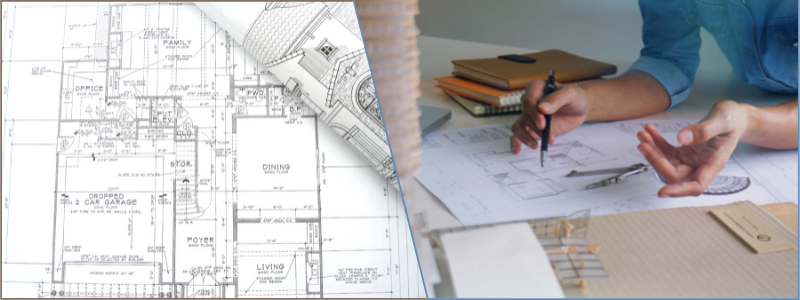
Architectural Design Fee Schedules, Rates, and Pricing for Architect Firms’ Costs
Without standard fees, such as a pre-determined price per square foot of building or a national hourly rate, it becomes challenging to gauge what each architectural firm will charge for a project. Word-of-mouth estimates are not always reliable because the rates can change from time to time. The price differences may lead to difficulties in choosing the right firm, but it shouldn’t come as a surprise either. One of the main points of the aforementioned antitrust proceedings was to ensure a level playing field in which all architects, whether or not they are members of AIA, may offer competitive design service fees.
How much does an architectural design service cost?
Two architect firms may give contrasting estimates with a massive gap between the bottom-line prices for the same service. Clients are often assumed that the pricing method is entirely arbitrary, and they have no idea how much an architect deserves for the time and effort put into a project. Although the ambiguity and sense of arbitrariness are accurate to a certain extent, most firms determine their rates based on any of the following typical fee structures.
RELATED: Billable rates for architect’s design services, architectural costs & hourly Fees
Hourly rates
One of the architects’ most common pricing scenarios is to charge based on the number of hours spent providing any particular design service. As the term implies, every expense incurred by the architect while working on the project is billed to you. In addition to the hourly rate, the bill may include other disbursements for various resources, such as travel and printing, with a markup of around 10 to 15 percent.
The main advantage on your side is the chance to explore various design alternatives before deciding on which to use. You can have the architect draw and review the options as long as you feel there are details to refine and improve. It wouldn’t be much of a problem to stop the work early if necessary without leaving a trail of issues behind or wasting money. Nearly all architect firms today work in close consultation with the client every step of the way, so it makes little sense for them to make them work longer than it needs to be.
RELATED: 30 Architecture design inspiration resources
Despite being frequently put in place to determine the cost of design service, some essential details about the calculation of hourly rates remain murky from clients’ perspectives. Architects only use three variables to determine the total cost, including their qualification or level of experience, the hourly rate itself, and the working hours. The location also matters, but the hourly rates of architect firms based in the United States and Canada are from $65 to $150.
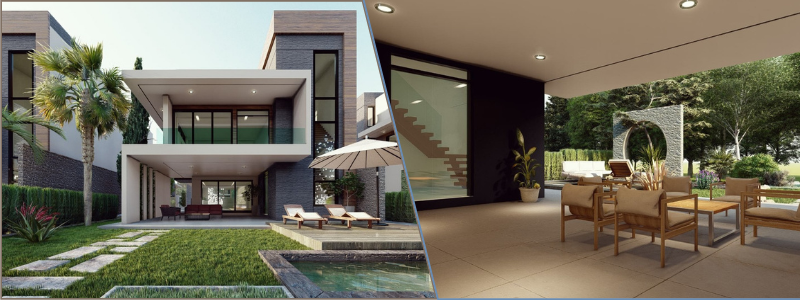
Not everyone in an average architectural firm will be working to provide design services for the same client, especially in a residential project. The hourly rate depends on the qualification of the designer assigned to it. The table below shows a typical rate for architects of different experience levels.
| Qualification | Description | Hourly rate |
|---|---|---|
| Junior Architect I | From 3 – 5 years of experience working under the supervision of a senior architect. | $65 |
| Junior Architect II | From 6 – 8 years of experience, responsible for the daily oversight of specific projects. | $90 |
| Architect or Project Manager | At least ten years of experience acting as second-in-command in an architectural firm and capable of overseeing multiple projects and teams. A Project Manager also is responsible for managing schedules, budgets, and client communication. | $125 |
| Principal | Owner of the architectural firm. A principal architect is responsible for the firm’s day-to-day operation and the quality of design services provided. | $150 |
A significant concern for the client in using the hourly rate compensation method is the uncertainty of the costs for drafting services. There is no telling exactly when the design service will be completed, and more hours translate to higher costs. A good workaround is to set a cap on the maximum number of hours allotted to every part of the design service. The maximum cap is added as a “not to exceed” clause in the contract. If for some reason, the firm cannot meet its obligation after reaching the cap, you can either renegotiate the term of the contract or finish the task yourself.
RELATED: Where and when to find freelance architecture visualization services and designers
An hourly rate is ideal only when you know the design well enough to keep the project as straightforward as possible with only a few changes along the way. It is best to look for other compensation methods for a design service without clearly defined specifications.
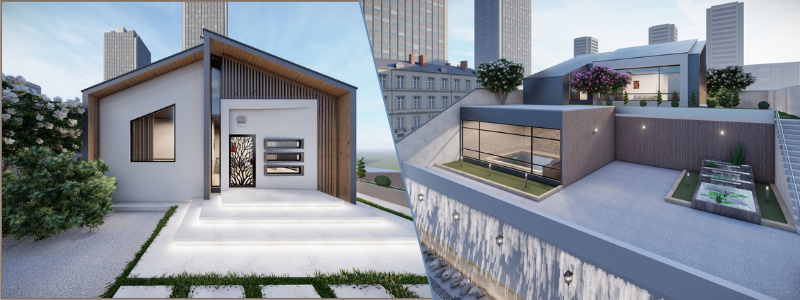
Percentage of construction cost
Larger projects may use a more clearly defined pricing structure, for example, the percentage of construction cost. The design also makes record-keeping easier for the clients, and there is a more acceptable degree of certainty on design-related expenses. A large project takes a lower percentage fee than a smaller one. The following table shows some common examples.
| Project | Percentage of construction cost |
| Commercial building or multi-million dollar projects | 3% to 12% |
| New construction of a residential home | 5% to 8% |
| Renovation of an existing building or room remodeling | 10% to 20% |
Many references online give ten percent as an average design fee, but this is only a rough guideline and is highly dependent on countless other factors.
Here is how it works. A client hires an architectural firm to design a building. Once the drawing is complete, the firm sends the project brief to multiple contractors and receives several bids. The client is responsible for choosing a contractor. The contractor and client may negotiate further for the price, which includes the firm’s percentage as a component of the estimated total cost.
RELATED: Learn about the types of architectural rendering services available for your company
The general rule is that a small project such as a renovation of an existing building presents more challenges than constructing a new building from scratch. There can be unexpected discoveries that make the work more difficult than anticipated, hence higher percentage cost. For example:
- Scenario 1: you want to build a 3,000-square-foot building with an estimated $500,000. Assuming the architect’s firm charges you 10% of the cost, the design fee is $50,000.
- Scenario 2: if you increase the budget twice as much to $1 million, the rate may go down to 6% only, meaning you are billed $60,000. The percentage decreases, but the fee is still higher because you have a larger project.
- Scenario 3: for two different buildings, each of 1,500 square feet and with a budget of $250,000, the fee can increase to 15%. Even if the overall cost and area covered are the same as in the first scenario, you pay a higher design fee of $75,000 ($37,500 for each building).
- Scenario 4: the project consists of the main building and addition, with an estimated cost of $400,000 and $100,000, respectively. The architect sets a 10% fee for the former and 15% for the latter. The design fee is $40,000 for the first building and $15,000 for the second.
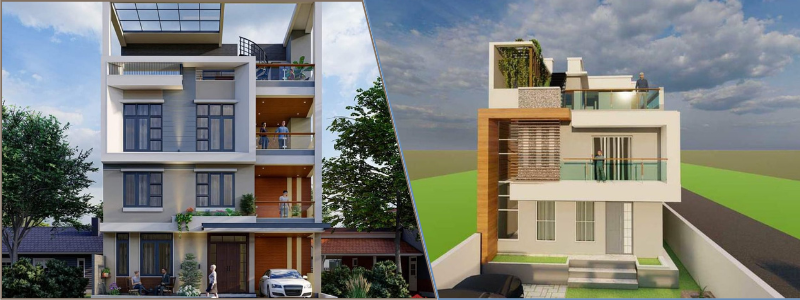
Before signing a contract at the beginning of the project, make sure you understand what the percentage entails. If it is too good to be true, it probably is. A lower rate does not necessarily mean you secure a good deal. A surprisingly low design fee can indicate that the firm only provides the bare minimum service, such as drawings, to obtain the building permit. Although the architect may design the overall house, you may need to work with a kitchen designer separately later. Higher fees will likely cover the whole package of design services, including timely inspection, quality control, and interior design, among others, until completion.
RELATED: How 3D rendering has revolutionized interior design
The percentage of the cost of work is possibly determined by an estimate or the actual cost of labor, whichever is more specific at the time of the calculation. Since choosing the pricing structure almost always comes at the beginning of the project, an estimated cost is most likely used as the basis of analysis. The implication is that a refund is allowed when the project ends, and there is a significant difference between the estimate and the actual cost. If the total cost exceeds the estimate, the architect will send a bill to reconcile the difference; if it is lower, the project owner can ask for a refund.
The percentage-based compensation method is best when you understand the basics of construction costs and how design choices may affect the budget.
Cost per square foot
Some say the compensation method combines the previous two pricing structures. An architect’s firm may charge around $15 to $25 per square foot, representing between 8 and 15% of the overall construction cost. Referring back to an example mentioned in the previous point and using the median price per square foot of $20, the total design fee is:
| Building area x Cost per sq. ft. = Total design fee 3,000 x 20 = $60,000 |
It may seem simple enough, but there is a slight complexity to understand. When the size of the project grows at the client’s request, and there is a renewed demand for more space, the total design fee also increases. However, the opposite is not always true. A decrease in project size often does not mean lower expenses on architects’ design services. The works for the initial plan have already been delivered; it is doubtful for architects to undo any completed service. Cutting the project size by 25% will not suddenly decrease the overall design fee by 25% because they are still entitled to the prices for the services provided before the change in plan happens.
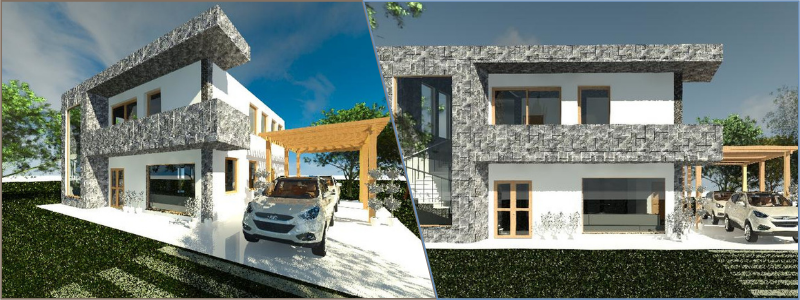
RELATED: 3D Rendering costs & 3D visualization prices for firms
The compensation method is much more common in smaller projects due to its simplicity. There might be a few extra dollars added on top of the initial agreed-upon cost per square foot for some complimentary services such as:
- Initial draft: if you want to purchase the initial draft (not the final drawings sent to contractors), the architect will charge $1 and $5 per square foot.
- Detailed drawings: depending on the contract, the architect may not provide a clear picture that includes an electrical and plumbing plan—the additional document costs between $1 and $5 per square foot.
- Project management: for miscellaneous services not mentioned in the contract, the fee is around $1 to $5 per square foot.
Many architects prefer this pricing strategy for new build projects. Remodeling, renovation, or even an addition to an existing house can reveal a lot of unknowns during construction. Unlike an hourly rate method where architects get paid for their time, revisions do not count as an additional area with cost per sq. ft. structure. Architects will limit the number of revisions their clients can ask for to avoid doing unpaid work. If modifications are unavoidable and the project calls for new drawings, the architects usually will switch to an hourly rate instead.
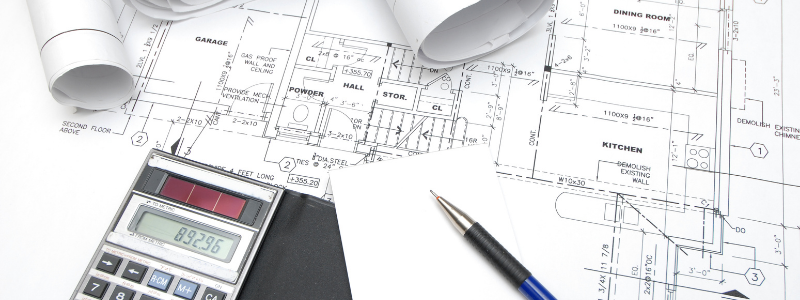
Lump-sum
For a project small enough that it does not need constant input from an architect’s firm, a lump sum or fixed-fee pricing structure is the most practical. A client gives the project brief to an architect, who estimates the total cost based on that information. Since the estimate must cover all possible works required from start to completion, the architect must understand the project exceptionally well. Otherwise, the forecast can miss the mark by a long way. Some architects ask for an hourly rate during the consultation, drawing, and reviewing process before moving to a fixed-fee structure to ensure the calculation is done correctly.
RELATED: Drafting services rates vs. architectural development costs & differences in pricing
While it is the most practical for clients, a lump sum is much less preferable among architects. It is impossible to predict what will happen during a construction process precisely, and there can be complex challenges that take some serious time and effort to tackle. The possibility of the client asking for a change must also be taken into account. If the clients insist on having a fixed-fee rate, architects are often inclined to estimate on the high side. It is a necessary practice to protect themselves against cumbersome revisions. As a precaution, the contract may include a clause to change the fee if changes occur to the initial design plan.
What does an architect firm charge for each design service?
An architect’s primary service is carried out in five phases:
- Schematic design
- Design development
- Construction documents
- Bidding or procurement
- Construction administration
There might be supplemental services included for any given project. Although they are not defined in the list, the contract may attach a clause to provide the list of additional works such as environmental studies, feasibility studies, energy analysis, project financing, equipment inventories, flow diagrams, CAD services, and graphic design few.

In addition to design services, an architectural project may require consultations with electrical engineers, master plumbers, HVAC professionals, structural engineers, and specialists in relevant fields. An example of a simple breakdown of the services and consultants’ fees is as follows:
| Architectural design services | ||||
| Phase | Percentage | Consultants | Percentage | |
| Schematic design | 15% | Electrical engineer | 15% | |
| Design development | 20% | Mechanical engineer | 25% | |
| Construction documents | 40% | Structural engineer | 60% | |
| Bidding or procurement | 5% | |||
| Construction administration | 20% | |||
| Total Fee | 100% | Total Fee | 100% |
The total fee for the consultation is the burden of the architect, but once again, it will be billed to the client. While the percentage remains the same throughout the years, the dollar value increases due to inflation, living costs, and salary changes.
How Cad Crowd can help
When deciding which pricing structure for your project seems too overwhelming, a plausible option is to let multiple architectural design professionals make an offer.
It sounds straightforward enough, but it’s not always applicable in real life. However, with Cad Crowd, it is easy to post an architectural contest and invite dozens of qualified freelance designers to compete for the best plan drawings. You don’t have to end up hiring all of them or paying for all the designs submitted. Choose only the best design that meets your requirements and continue working with the winner. If needs be, Cad Crowd can help determine an ideal pricing structure depending on your project brief and select pre-vetted designers to work on it for an affordable fee.
To find out more about our range of Architectural Design Services and how we can provide assistance, leave us a message about your project today.
